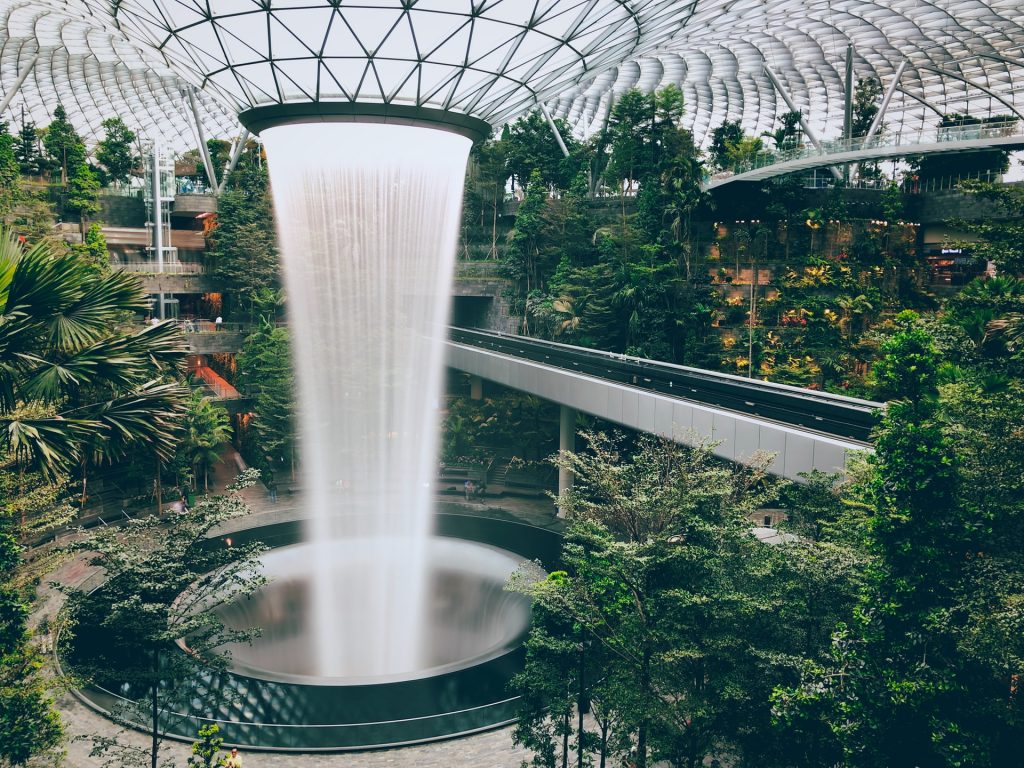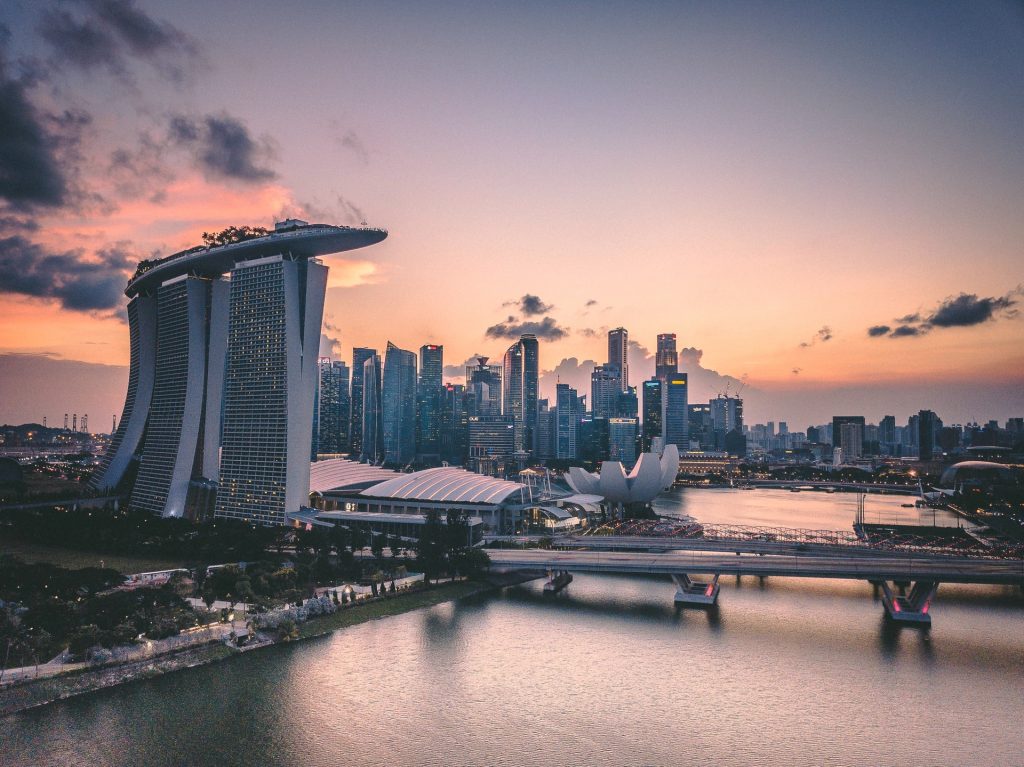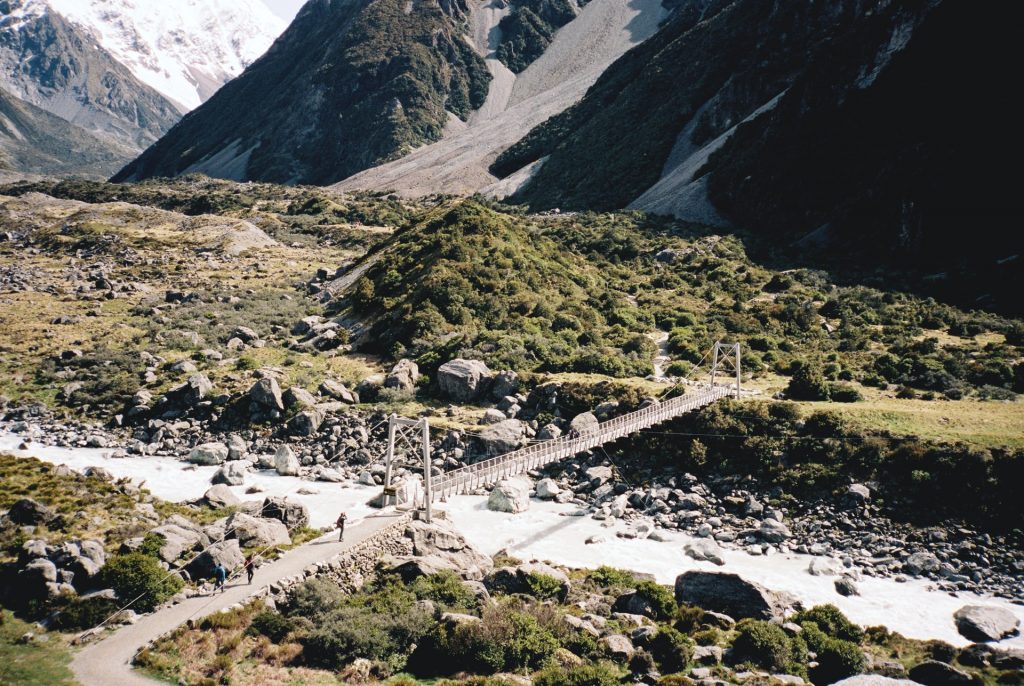Travel bubbles, also known as travel corridors and corona corridors, are essentially an exclusive partnership between neighboring or nearby countries that have demonstrated considerable success in containing and combating the COVID-19 pandemic within their respective borders. These countries then go on to re-establish connections between them by opening up borders and allowing people to travel freely within the zone without having the need to undergo on-arrival quarantine.

The proliferation of the term was pioneered by three Baltic states, namely Estonia, Latvia and Lithuania when they formed a trilateral partnership granting citizens of said countries entry into the member countries’ territories. This free passage would eventually be referred to as a travel bubble.
Not solely limited to tourism, the safe bubble also allows the three Baltic countries to rekindle trade relations and revive other sectors as well. The chances of travellers transmitting or contracting the virus within the travel bubble are extremely unlikely due to the level of success the countries involved have exhibited in managing the viral outbreak.
On the flip side, those looking to enter the travel bubble from the outside must undergo strict preventive measures which include a 14-day isolation, an official document stating they have not been infected with coronavirus and have not come into contact with anyone who has.
What other travel bubbles are out there?
Note: not an exhaustive list. This section will continually be updated as more travel bubbles are confirmed.
When the world became aware of this initiative, many began to follow suit, or at the very least, seriously considering the possibility of forming a bloc with their neighboring countries. Most countries generally view the travel bubble concept as something that would entail business recoveries across multiple sectors.

The birth of the travel bubble.
The advent of coronavirus has brought forth an unprecedented and multifaceted crisis, as the world witnessed global shares taking a hit, unemployment rate skyrocketing and oil prices come crashing down. As the threat of a global recession looms, it’s no exaggeration to say that the world economy in general is currently in dire straits.
With passengers cancelling their holiday and business trips due to airlines being grounded and borders being closed, the travel industry is among the hardest hit by the onslaught and is now facing seemingly insurmountable odds.
Tourism makes for a considerable percentage of any country’s yearly GDP, and to lose such a significant chunk of the pie has proven to be quite damaging. Thus, governments worldwide are struggling to find ingenious ways to somewhat restore the inbound cash flow streams associated with international tourism and travel, which in turn brings us to a little something called ‘travel bubble.’

About The Travel Bubble
Speaking to reporters from Canberra today, Prime Minister Scott Morrison said international travel would be discussed at National Cabinet this Friday.
“Not to the point of a decision on that, but I think a further assessment of where things are at,” Mr Morrison said.
The PM said the government was regularly looking for other countries around the world that had gained control of the pandemic in a way similar to Australia.
“We continue to hold these discussions with countries like Japan, we have had them before with Korea, specific nations of course, New Zealand has already been opened for travel into Australia without quarantine arrangements,” he said.
“I think we proceed cautiously. There are countries that are doing far better than what we are seeing in Europe and the United States.
“The situation in Europe and the United States is awful. And obviously that presents great risks for people coming in from those parts of the world to Australia, but out of many parts of Asia, particularly in North Asia, places like Taiwan and I would also say provinces of China, Singapore, we, you know, are looking at what alternative arrangements could be hard to channel visitors through appropriate quarantine arrangements for low risk countries.
“That is a process other countries are doing as well. We are open to that. We have not come to a point of decision on that.”
The news comes as Victoria hit 11 days with no new coronavirus cases or deaths – a massive milestone for a state that was, just a few months ago, grappling with hundreds of daily virus cases.
For more follow the news.com.au live blog.
What is a travel bubble and will Australia have one?
A travel bubble is when two destinations allow travellers to travel back and forth without any major restrictions. At the time of publication, Australia only has domestic travel bubbles like South Australia and Queensland. Other states, like Tasmania and Western Australia, are closed to all non-residents.
What we’ve learned recently is that partial travel bubbles may form before we see countrywide travel bubbles take place. A one-way travel bubble from New Zealand to Australia is the maiden bubble to form between the two nations, with both countries watching closely to see what they’ll learn from this endeavour.

Australian Prime Minister Scott Morrison has been open to the idea of forming travel bubbles with countries that have low to no COVID-19 cases. When forming the partial travel bubble with New Zealand, Prime Minister Morrison said, “If there’s no COVID-19 in Christchurch, and there’s no COVID-19 in Queensland, then there’s no reason both of them can’t come to Sydney.” Prime Minister Morrison recommends a ‘hotspot’ approach, urging states and territories to ban travellers from designated COVID-19 hotspots, rather firmly closing borders.
However, even if Australia’s national government is open to a travel bubble with another country, domestic state and territory governments also have to be on board. Additionally, the country Australia hopes to open its border to needs to reciprocate for the bubble to be complete. When it comes to forming travel bubbles, it seems like one government has the wand, the other has the soap, and the other has the water.
Destinations that could join Australia’s travel bubble
Australia’s Asia-Pacific neighbours seem to be the most likely countries to form a travel bubble with Australia. If you’re hoping to travel internationally as soon as it’s safe to do so, these are the destinations that could be worth daydreaming about.
New Zealand Travel Bubble
Talks of opening a travel bubble to New Zealand (dubbed the Trans-Tasman travel bubble) have been happening since early 2020. As of 16 October, Kiwi residents are allowed to enter certain parts of Australia without having to quarantine. However, if Aussies want to cross the Tasman Sea, they’ll need to quarantine for 14 days upon arrival.
New Zealand Prime Minister Jacinda Ardern has made it clear that the New Zealand government will only relax their border restrictions as soon as it is safe to do so. In an interview with Today, Prime Minister Ardern said, “We want to make [travel bubbles] work. We want it to be safe. We want everyone to be comfortable with it and know that we are safeguarding our own strategies as we do it.”

The New Zealand government says it could be open to Prime Minister Morrison’s ‘hotspot’ approach of allowing travellers outside of COVID-19 hotspots to enter New Zealand. States that have low to no COVID-19 cases, like Western Australia, may be the first to enter the quarantine-free travel bubble. Many travellers are crossing their fingers for this bubble to form before Christmas, but this has yet to be confirmed by either government.
South Pacific, Cook Island Travel Bubble
Many South Pacific nations like Fiji, Vanuatu, Tonga, the Solomon Islands, New Caledonia and Samoa have managed to keep COVID-19 from spreading amongst their communities. With tourism being many of these nations’ main forms of income, they are eagerly awaiting for safe travel bubbles to form with Australia.
Fiji Prime Minister Frank Bainimarama says that he is hoping to talk about the practicalities of opening a ‘Bula Bubble’ between Fiji and Australia as soon as possible to do so safely. Fiji has also opened a semi bubble called the ‘Blue Lane’ already, allowing yachts from nearby countries to enter Fijian waters and spend their 14-day quarantine out at sea before making landfall.

Other countries, like Vanuatu, are waiting for Australia’s community transmission case numbers to go down before considering a travel bubble. Meanwhile, Cook Islands states it is ready to open up to New Zealand as soon as each country has been community transmission free for four weeks.
Singapore Travel Bubble
On October 8, Singapore opened its doors to Australians who are missing the land of kaya toast and Singapore Slings. However, this bubble is only open to residents outside of Victoria, and Australians will need government approval to leave. When Australians return, they must complete a 14-day quarantine. To get into Singapore, travellers must apply for an entry pass, download a contact tracing app, and take a COVID-19 test upon arrival.

Hong Kong Travel Bubble
Hong Kong has put Australia on a travel bubble shortlist, though we don’t know exactly when or if this will commence. In mid September, Hong Kong commerce minister Edward Yau Tang-wah stated that rough plans were in the works for forming this travel bubble, and that COVID-19 tests would likely be mandatory for travellers on both ends of their journey.

Japan Travel Bubble
Tourism Minister Simon Birmingham speculates that Japan will be one of the first countries to form a travel bubble with Australia, if both governments agree. Prime Minister Morrison has commended Japan’s handling of the virus, which helps establish trust among the two nations should they create a travel bubble.

South Korea Travel Bubble
Similar to Japan, Tourism Minister Simon Birmingham stated that South Korea could be another country that will lead the way in forming a travel bubble with Australia. Until then, we’ll have to rely on D.I.Y. bibimbap.

While the exact details of when Australia will open and to which countries remains a mystery, there’s hope on the horizon. If Australia and our neighbouring counties can keep COVID-19 case numbers low, we could be travelling internationally come 2021. However, there is no guarantee of if or when travel bubbles will form, as the Australian government has yet to release a concrete statement.
Nonetheless, whether it’s an island hop holiday in Fiji, sakura season in Japan, or a grand adventure in New Zealand, we have more time than ever to dream of all the trips we’ll take when it’s time to travel again.
Common questions travellers ask about Australia’s potential travel bubble
What is a travel bubble?
Corona corridor, travel bubble, travel corridor, travel bridge—no matter the name, the concept is essentially the same. A travel bubble is when two destinations allow quarantine-free travel between one another. Meanwhile, travel is restricted for those outside this bubble.
Because this concept is so new to modern day travel, each travel bubble might have its own set of rules. Travel bubbles may only work in one direction or they may require COVID-19 tests for travellers. Each bubble is different depending on the government rules that create them.
When will Australians be able to travel to Europe or the United States?
Australia’s international border is currently closed with no clear date as to when it will open. In a recent press conference, Tourism Minister Simon Birmingham stated that travel to Europe might not be possible until 2022. Senator Birmingham says that Australia will be prioritising travel to other low-risk nations.
What countries could be included in Australia’s travel bubble?
Right now, only New Zealand is currently included in a one-way travel bubble between Australia and New Zealand. Prime Minister Scott Morrison says other nations like Singapore, Japan, South Korea and Pacific Island nations have done well in managing the virus, and could be included in a travel bubble in the future.